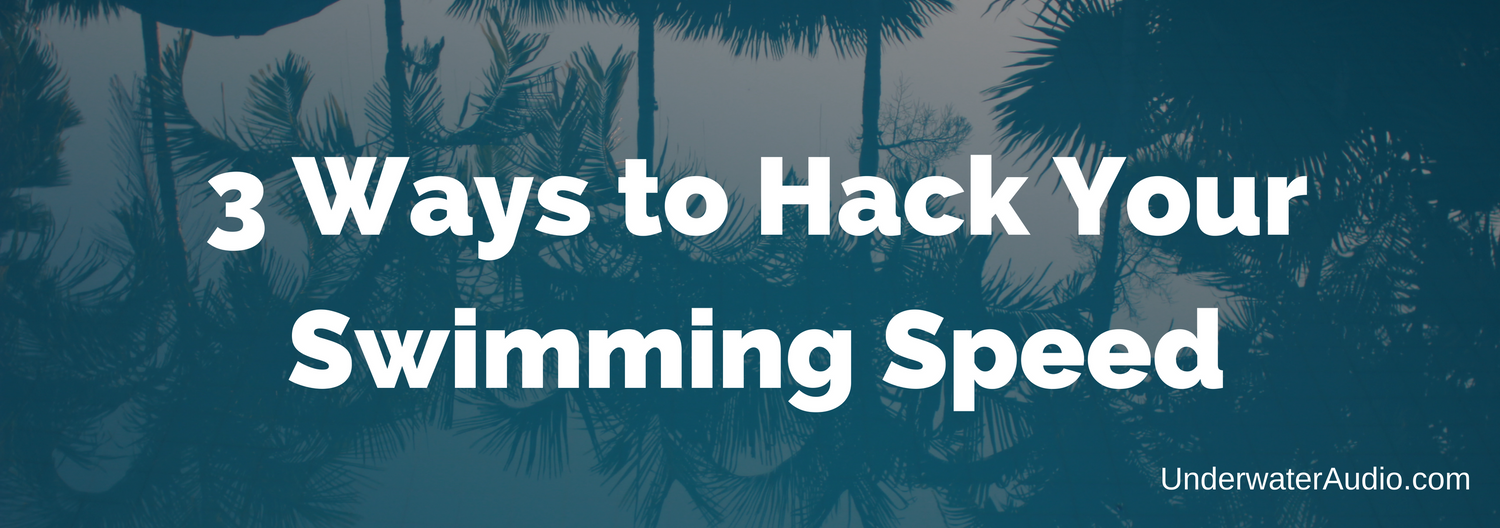Imagine this:
Your feet are on the edge of the pool…
Your knees are bent in anxious anticipation.
Adrenaline runs through your veins, and with an explosive spring of the legs, you’re in the air! Your body bursts off the platform and then...
SPLASH!!
You’ve broken the surface of the water. You plunge through the water like a torpedo. Your body surges forward while a million tiny bubbles follow in your trail…

And then your speed slowly tappers off. The momentum from your dive can only last so long. Once it's gone, you’re stuck with the hum-drum pace of your average Joe stroke.
But why?! The answer is that you hadn’t learned these swimming hacks yet! Take control of your speed in the water with these tips:
1. Commitment
Practice, practice, practice.
There is a reason why moms and teachers alike have drilled this notion into our heads.
You can't get better without practice. If you want something, you have to put in the time.
But the real question is, “How much is enough?” Do you have to swim like a body dysmorphic, triathlon junkie/exercise addict to get to get the job done? (You all know who I’m talking about).
It’s more of a happy, healthy medium. You’ve got to swim at least about 3 times a week for an hour or more. 5 times would be better. But 3 is sufficient. The idea is to make it a regular, realistic, maintainable goal. That way, the training can slowly build instead of going in waves.
2. Planning
News flash!
Real swimmers don’t just swim.
They have structure. They do drills. They are coached. They train and condition their muscles. They race. They track their times. They make goals.
Consider researching swimming drills for aerobic and endurance swims and then alternate days.
3. Technique
Of course, having experience and strength is going to help you be a better athlete. But is there a way to increase speed even further while strength and endurance stay constant?
Yes, there is.
The answer is technique. It comes down to physics and body mechanics. Science dictates that you can go faster if your body is in the ideal formation.
Less drag. Less resistance. More force. More propulsion.

Create Less Drag
–Stay Horizontal
The more water molecules you disrupt, the more drag you create. Stay in line with the surface of the water. Keep your posture straight whenever possible.
–Head Placement
“Learn how to keep your head down during the pull to swim a faster breaststroke.” Your head should be down during the freestyle, too. And the neck should be parallel to the surface of the water. Horizontal. It is super important to have the proper head and neck position. If it’s at an angle, it causes drag. Also, it leads to low hips. Which means low body position. And sinking.
–Efficient Kick
We’ve discussed not letting the legs sink. It creates drag. But don't make the mistake of assuming this means the higher the kick, the better. Do not to lift your leg above the water’s surface. Keep it submerged, but not too far under. Just slightly. And be as horizontal as possible. Breaking the water’s surface only creates more drag.
Create More Propulsion
–Slightly Spread Fingers
“In world-class front crawl swimmers, the kick contributes for up to 10% of propulsion.” That’s not a lot. So, focus on the arms and hands. They are the root of the power and force.
Popular belief dictates that fingers should be shut tight when you swim, like an oar. However, professional swimmers know better. Researchers report that keeping a slight gap between the fingers creates 53% more force. Think 'fork' instead of 'paddle'.
Trust me. It may seem weird or wrong, but it’s true.
More force means more propulsion. Don’t spread them too much though! “The perfect spacing is between 20 per cent and 40 per cent of the diameter of the finger.”

The Hardest Part
The hardest part is actually doing it.
It’s easy to plan out new goals but actually doing what it takes to achieve them is a whole other story.
My advice: Start now!
Just start…You don’t have to have everything completely mapped out to start. It doesn’t have to be the perfect time in your life to at least start. You don’t need all the right gear to simply START. Don’t get so caught up in the preparation that you delay progress.
Your Thoughts
What are your strategies to improve speed? Do you have any advice on how to stay motivated when working towards a swimming goal? Don’t be shy! Please SHARE!



Leave a comment
All comments are moderated before being published.
This site is protected by hCaptcha and the hCaptcha Privacy Policy and Terms of Service apply.